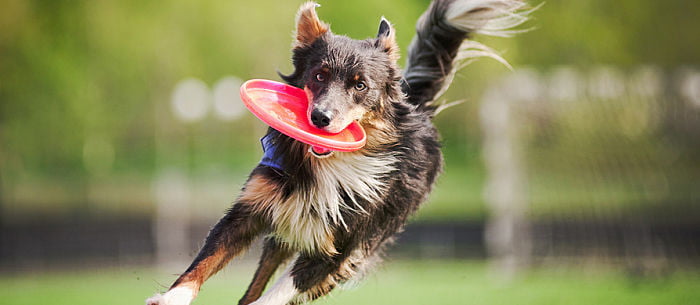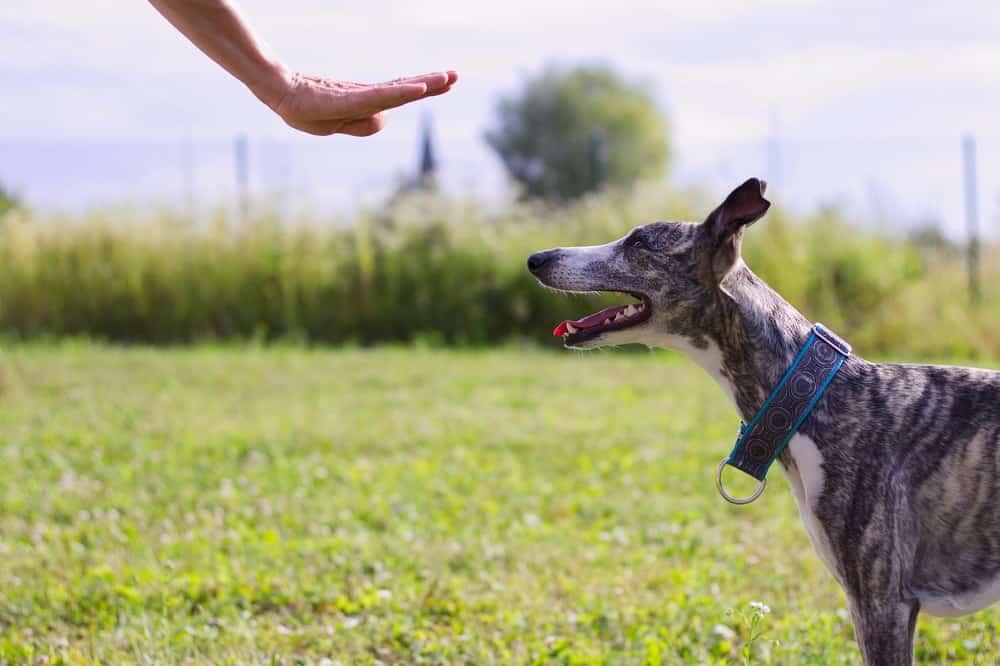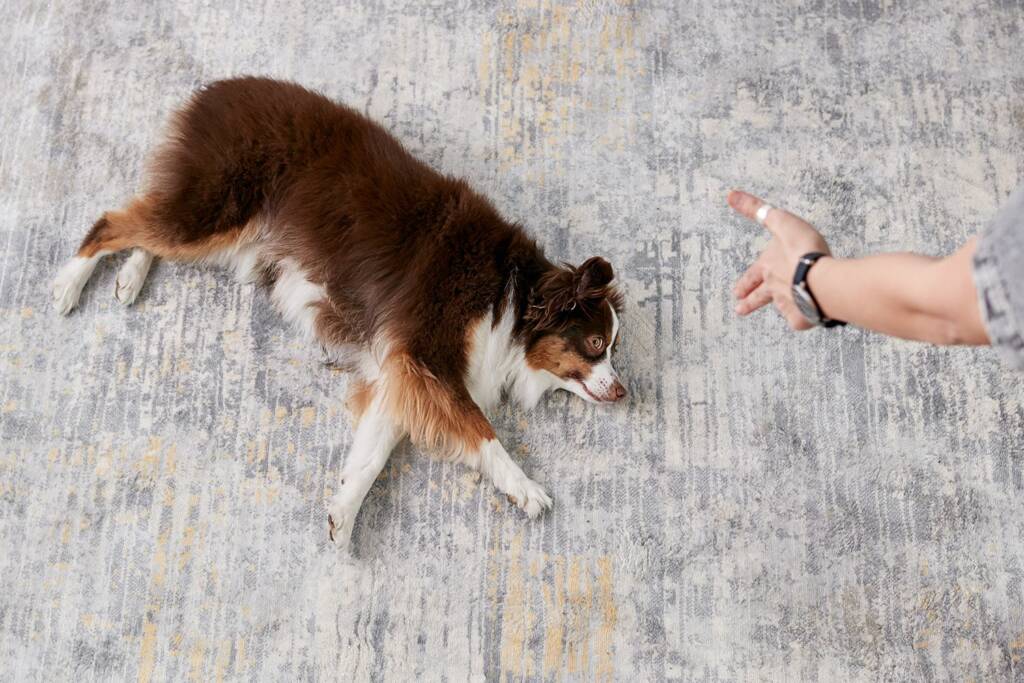Most effective tips to train your gun-shy Lab: If you want to introduce your dog to gunfire, Labrador retrievers are an excellent choice since they are obedient, follow commands well, and have tons of energy.
No dog is a natural hunter when it comes to training with guns and hunting. As a result, you need to prepare them and train them consistently.
Here are a few tips on how you can prepare your pet for Labrador gun dog training.
1. Begin by training your Labrador Retriever.
If your Labrador is gun-shy before you consider how to train him, see if he is accustomed to gunfire and if he hunts well so you can start with the basics. So, you shouldn’t skip your basic obedience training either.
Training your dog to obey is a crucial part of his life. Despite hearing and seeing distractions like gunfire and wild animals, you want them to listen to you.
For a few months, teach your Lab puppy basic tricks like sit, stay, and heel before you introduce him to gun training. This will help them learn how to control themselves and listen to you, which will make Labrador gun dog training easier.
2. Test Your Labrador Retriever’s Confidence in Gunfire.
The first time your dog hears gunfire, you should never assume that it will be comfortable. It is also not a good idea to fire a gun near your Labrador puppy to determine whether she is gun-shy. Your pet may become traumatized, and they might panic when they hear gunfire in the future.
You can start by assessing how confident your Labrador is first. Try to observe whether their ears and tail are raised when they retrieve something to determine if they are confident. They may not feel confident or may feel shy if their tail is behind their legs and they look sulky.
Bringing them to a shooting range or shooting range at a young age should not force them to become accustomed to gunfire right away. You might also want to keep them away from fireworks. Keeping your Lab pup inside during thunderstorms is also a good idea.
3. Become familiar with other loud noises.
Your dog needs to build a slow tolerance to loud noises. Because of this, you should never shock them with loud sounds such as gunfire and fireworks right away. Your dog will be more comfortable and safer if he warms up slowly to loud noises.
You can, for instance, keep your Labrador puppy with you in the laundry room while the machine is being used. They will gradually learn to tolerate loud noises from the noise from the laundry machine.
Increasing the volume in your home can also be done slowly. Keeping the radio or TV on while talking to people can help your Labrador retriever become accustomed to multiple sounds at once. Adding more sounds slowly is also important. Otherwise, your dog may show signs of anxiety.
Check out our suggestions for what you can do here if you are looking for ways to train your Lab to do fieldwork.
4. Present the gun as a positive item.
Every time they see a gun, dogs get scared. It might be because the first time they see a gun is also when they hear it, which triggers a traumatic response in their brains. As a result, you should never fire a gun when showing it to a Labrador for the first time.
As a positive item, you can introduce the gun to your Lab. Your Labrador puppy can see the gun before and after a feeding, for example. Since most dogs love to eat, they will also think the sight of a gun is good.
Another option is to buy a toy gun that makes a noise when it is cocked and fired. This will help them understand that guns make noise when they are being fired.
5. Introduce your Labrador slowly to targets.
You can show the lab the targets first before you let them hear gunfire. That will give them a better understanding of what you are trying to accomplish. During their first three to nine months of life, you can show them dead birds.
By showing the birds to your Lab, you can encourage him to fetch and retrieve them. As a result, your dog will positively associate hunting with fun, which will prepare him for gun training.
However, not all Labrador puppies will be excited upon seeing a dead bird for the first time. They will gradually warm up to the idea of retrieving birds if you reward them each time they do so.
6. Introduce the wing-clipped bird.
When your dog appears confident and has fun playing with dead birds, then it’s time to move on to the next level. Your dog will love chasing around a bird that has had its wings clipped.
It is easy to clip a bird’s big feathers extending on the back of its wings by simply extending its wing. This is what is known as the bird’s longer flight feathers. One or both wings can be used for this.
If you want your Labrador to chase the bird, throw it. As such, you will help your Lab puppy develop his or her hunting instincts. As long as your dog can see you with the gun (without firing it), he will associate it positively with chasing the bird.
Continue doing this for a few days until your dog appears extremely confident and enjoys chasing the birds. At that point, you can slowly introduce them to gunfire.
7. Let’s talk about gunfire in the lab.
You can begin introducing your gun-shy Labrador retriever to gunfire now that you have assessed his suitability as a gun dog.
This step involves making sure that your Labrador positively associates your gun with fun and enjoys chasing birds. Choose a firearm with the lowest possible firing volume. You can gradually introduce your Lab to the sound of guns by doing this.
You will probably need another person to help you with this step in training a gun-shy Labrador. Plant the birds and then let your puppy go hunting. Tell your friend to fire a shot from at least 100-150 feet away once your little Lab starts chasing the bird.
When you shoot the gunshot, and your Lab puppy keeps chasing the bird instead, you can continue. If, however, he pauses to look around, then that is fine. You won’t need to use your gun if he looks around. If necessary, you can keep treats or other dead birds with you as a distraction.
If your labrador does not react to the gunfire and keeps chasing the birds, keep adding more gunfire. To ensure that he can tolerate the noise, move the gunshots slowly closer to him.
Eventually, you will be able to fire your gun near your dog. You need to make sure that your Labrador doesn’t react each time you fire your gun.
You can repeat the whole process with a louder gun on your next trip. To get them accustomed to the sound, slowly increase the volume levels for each trip.
In summary
Labrador puppies must be prepared for gun dog training over time. Contrary to popular belief, training your gun-shy Labrador is more than just teaching him to sit and stay. We have outlined tips for getting your gun-shy Lab ready for Labrador gun training that you can follow to prepare them.
How do I make my lab not gun shy?
Fire the first shots from a distance, and follow them up with something good (treats or praise are good choices). Slowly move closer until you can shoot while standing right next to the dog. Try a quieter noise for a few sessions if you’re feeling anxious.
How do I stop my dog from being gun shy?
Don’t intentionally scare your dog, or surprise him with loud noises or gunfire while he’s sleeping. – Never expose a dog to gunfire on a shooting range or during target practice. It may overwhelm it even at a distance. Be aware of random gunshots.
When should I start gun training my dog?
If you are considering sending your dog to a professional trainer for retriever training, trainers generally accept the dog after its adult teeth have grown in. Formal training begins ideally around 6–7 months of age, however, generally any time under 2 years is acceptable.
Why is my dog scared of guns?
You probably hate guns or at least react fearfully when they are being used or are around your dog. Training them out of this behavior is important for hunting dogs, but it is normal behavior for your everyday dog owners as well.


